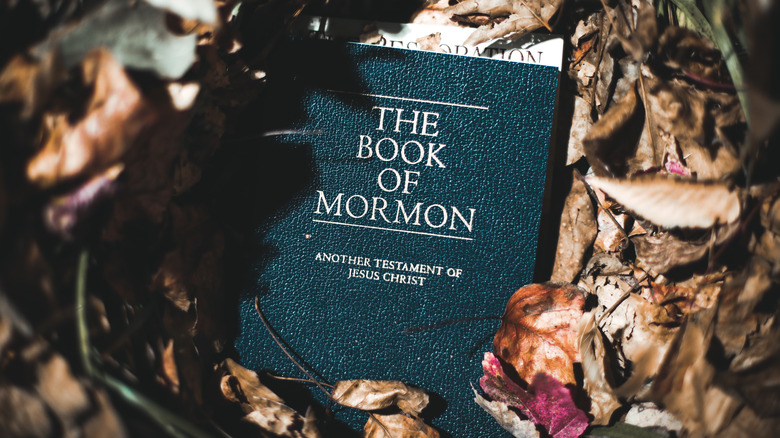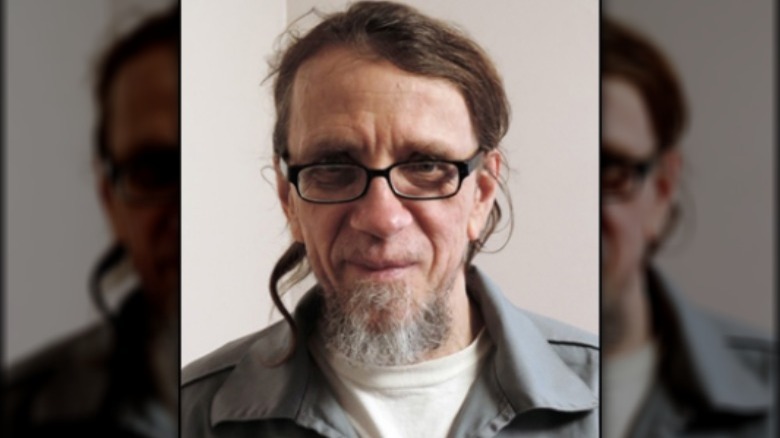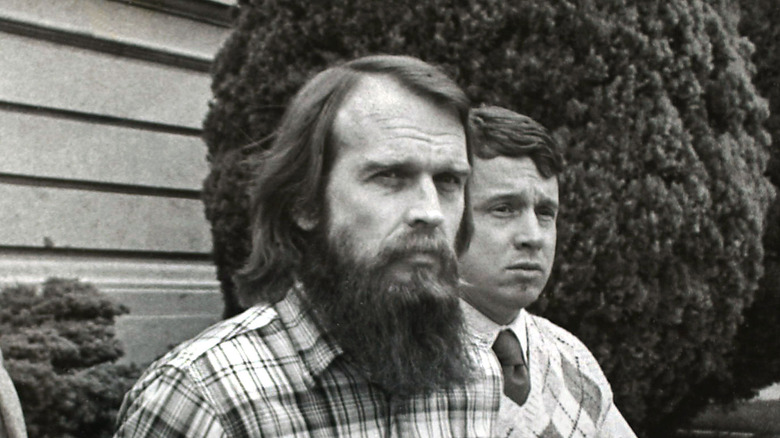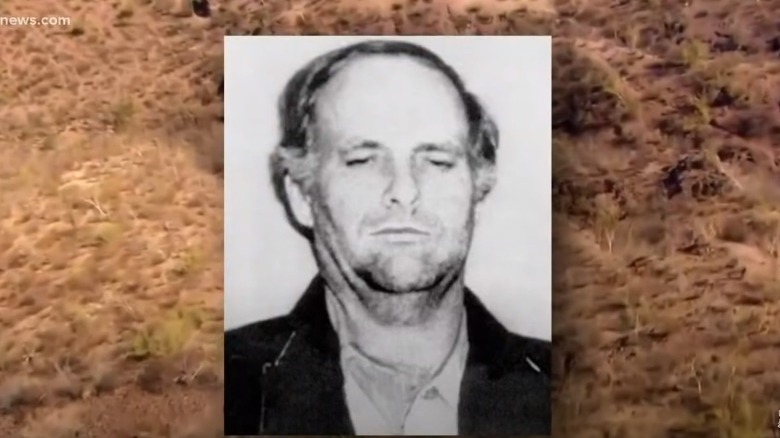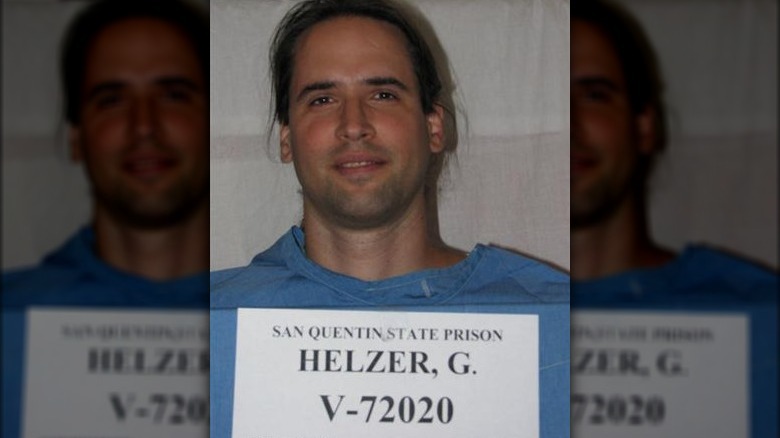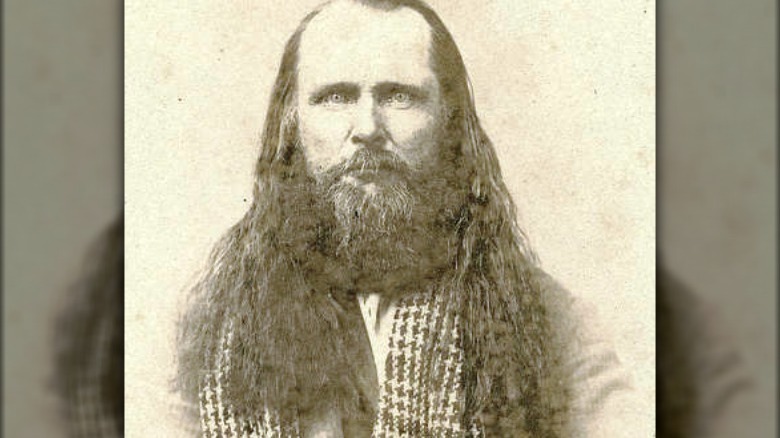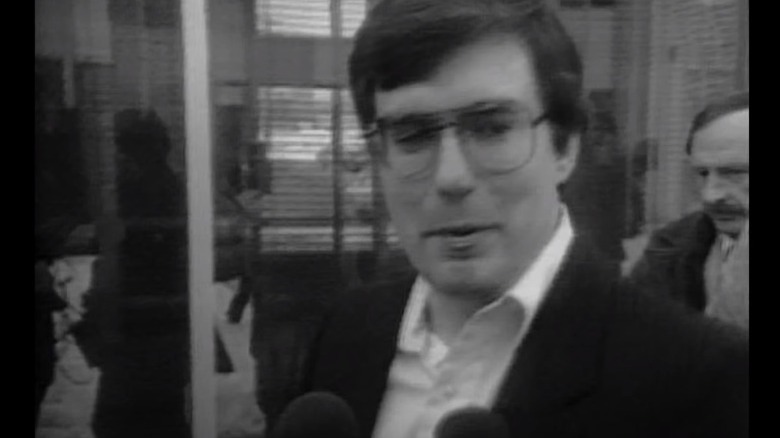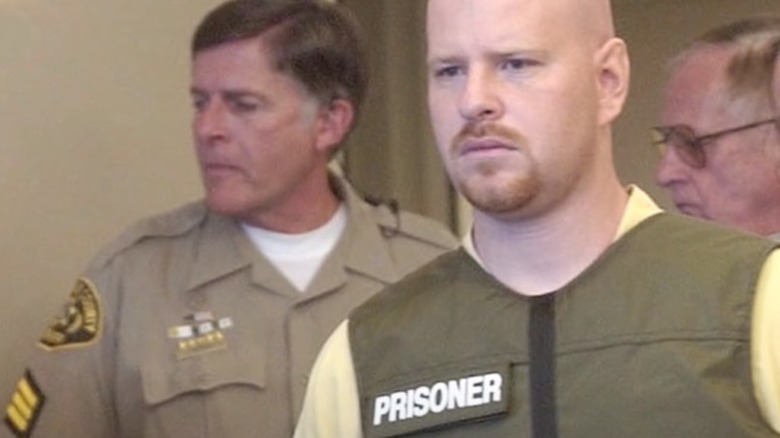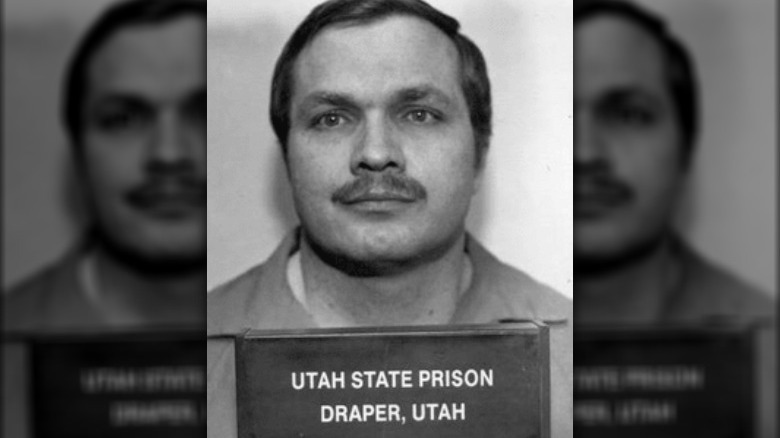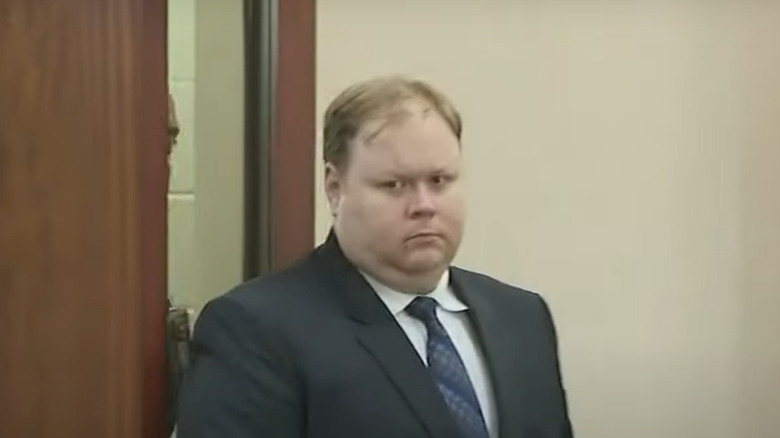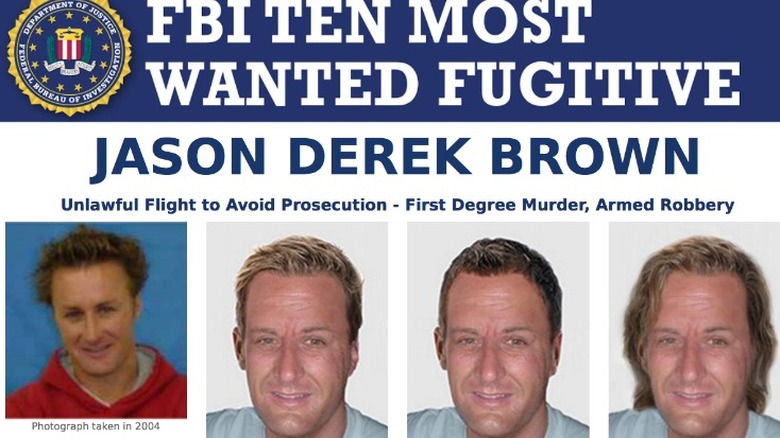Notorious Mormon Murderers
As far as religions go, the Mormons — or the Church of the Latter-Day Saints — are fairly new. Joseph Smith kicked off the movement in 1830, and according to the Smithsonian, their history has been a violent one from the beginning. After being kicked out of their initial strongholds in Ohio and New York, they headed west into areas that were, at the time, beyond U.S. territories.
Smith and his brother, Hyrum were later murdered by a mob in 1844 (via University of Illinois). Three years later, in 1847, church members established a foothold in what would become Utah.
Violence followed, incited by the murder of a Mormon man (killed by the legal husband of one of his many wives), and culminated in the massacre of the Baker-Fancher party. A Mormon militia murdered around 120 men, women, and children who were passing through the land they'd settled on, as per NPR. They spared only small children, and when the Army intervened and established a new governorship, the Mormons offered one man up to be put on trial and ultimately executed, as per Smithsonian.
That hasn't been the end of violence within the Mormon church, and even into recent years, Mormons have been front and center in some of the most high-profile murder cases in the U.S. While their faith wasn't always on trial as well, sometimes, it was.
The following article includes allegations of domestic abuse, sexual assault, suicide, and spiritual abuse. If you or anyone you know is experiencing these issues, help is available. Contact SAMHSA's National Helpline at 1-800-662-HELP (4357), RAINN's National Helpline at 1-800-656-HOPE (4673), the National Suicide Prevention Lifeline by calling 1-800-273-TALK (8255), or National Domestic Violence Hotline at 1−800−799−7233 (You can also find more information, resources, and support at their website.).
Joseph Paul Franklin
Serial killer Joseph Paul Franklin wasn't born into a Mormon family — instead, The Salt Lake Tribune says that he converted to Mormonism in 1974. The then 24-year-old would later say that he was attracted to the faith because of their stance on things like caffeine and alcohol, but after going to Utah the following year, he just couldn't get on board with some of the things that he saw. Franklin's birth name was James Clayton Vaughn, Jr., and according to his FBI profile, he changed it in homage to both Joseph Goebbels and Benjamin Franklin ... a sign of how his story was going to go.
After a non-lethal attack on an interracial couple in 1976, Franklin moved on to bombing, shootings, and bank robberies. Most of his killings were random — a couple in a parking lot, two cousins in Cincinnati, teenagers in Salt Lake City — and other targets included Hustler's Larry Flint, and civil rights leader Vernon Jordan. By the time he was arrested in Sept. 1980, he had been connected to the deaths of more than 20 people.
He later claimed that a childhood of abuse had left him "out of my gourd" at the time of the killings, and he was quoted as saying, "Luckily, I got locked up. I'm glad I got caught." He apologized for the murders, but it was way too little, way too late: His interstate crime spree led to multiple convictions in multiple states, and in 2013, Missouri executed him for the killing of a man in St. Louis.
Ron and Dan Lafferty
At a glance, the Disney+ series "Under the Banner of Heaven" looks like an excellent but surely fictionalized account of a group of Mormon brothers and the brutal murder of a woman and her 15-month-old baby (via IMDb) ... but it's absolutely true, down to Dan Lafferty's attempts to marry his stepdaughter.
Dan was excommunicated for that in 1982, and a year later, his brother Ron (pictured, center) was excommunicated from the Mormon church for what Deseret News calls "increasingly extreme religious views." In 1984, the Lafferty brothers formed their own breakaway sect, the School of Prophets: They were the prophets, and would teach that they had been instructed to kill Brenda and Erica Lafferty because the former had caused their excommunication, while the latter "would grow up to be just as despicable as her mother."
The two Lafferty brothers were arrested about a month after Brenda and Erica's July 1984 killing, and according to The New York Times, the following trial quickly focused on Ron Lafferty's competency to stand trial. Even as he claimed his own defense was working against him — including one attorney that he believed to be the reincarnation of his sister, who had become possessed by evil — Lafferty was ultimately found guilty, then mentally unfit (on appeal). The case went to trial in 1994, where he was convicted and sentenced to death. Ron Lafferty died of natural causes in prison in 2019, while Dan — convicted of baby Erica's murder — was serving out his life sentence in a prison in Utah.
Ervil LeBaron
It's unclear just how many murders the so-called "Mormon Manson" was responsible for, but The Daily Beast puts the estimate at somewhere around 50. In 2017, Anna LeBaron — one of polygamist cult leader Evril LeBaron's more than 50 children — explained to the BBC what it had been like: "We were taught to live in awe of him as God's prophet, as the one true prophet on Earth ... He used fear to manipulate and control people."
The Mormons banned polygamy in 1890 — officially, at least, and according to the Los Angeles Times, it wasn't unanimous. Among those who continued to take multiple wives were the LeBarons, and in 1924, Alma Dayer LeBaron moved his family to Mexico, where he raised his children — including Ervil. Ervil would later go on to form his own breakaway sect, take 13 wives, and father more than 50 children.
Even as the children labored — mostly in domestic appliance repair — to bring in the money, LeBaron preached about blood atonement: the idea that killing someone would allow them a place in heaven by cleansing them of evil. Anyone who opposed him would find themselves on the receiving end of a hit, as he claimed God told him who was next on the list. Then, it was up to the sect's followers to carry out the work. They did — even after he died in prison in 1981, his followers — and descendants — have carried on the killing, most recently connected with El Chapo's cartel.
Glenn and Justin Helzer
The murders were the subject of an episode of "People Magazine Investigates" called Children of Thunder, and it's gruesome stuff. The five bodies were discovered in August 2000: Jenny Villarin and a visiting friend named Jim Gamble were discovered in the apartment of Villarin's daughter, Selena Bishop. Bishop, however, was nowhere to be found ... until a duffel bag filled with body parts was pulled from the Mokelumne River. It would be the first of nine bags. The body parts, says SFGate, belonged to Bishop and an elderly couple, Annette and Ivan Stineman.
Thanks partially to a handprint on the Stineman's van, The Cinemaholic says the murders were linked to brothers Glenn and Justin Helzer, along with friend Dawn Goodman. The brothers had grown up in a devout Mormon family, and although Glenn had been excommunicated for drug use, he came to believe that he was a prophet tasked with kick-starting the second coming of Christ, defeating Satan, and taking over the Mormon church — after killing their leaders.
In order to finance the plan, Glenn set up the Stinemans' murder. They were killed after signing checks for $100,000, and next was Glenn's girlfriend, Bishop. She set up a bank account for them, and her mother and mother's friend followed, as the Helzers believed they knew the plan. Glenn Helzer was given five death sentences, Goodman received 38 years to life, and Justin Helzer also received the death penalty (although he committed suicide in 2013, per CBS News).
Orrin Porter Rockwell
Orrin Porter Rockwell was born in 1813, and according to the Utah History Encyclopedia, that was just at the right time for him to become not only one of the early followers of Mormonism, but the Mormon's so-called Destroying Angel.
After a failed attempt at assassinating Missouri's Governor Lilburn W. Boggs in the aftermath of his issuing an "extermination order" against the Mormons, it was Joseph Smith himself who told Rockwell that he was the subject of a prophecy: As long as he continued to practice his faith and refrained from cutting his hair, he would be pretty much invincible. Armed with that, he started killing — beginning with a man named Frank A. Worrell.
That brought him to the attention of Brigham Young, and he was appointed one of a group specifically instructed to go after settlers moving westward through what was now Mormon territory. He wouldn't be brought up on charges over the murders of some of the Aiken Party until two decades after the 1857 attack on a group of Californians, who were trying to reach an over-winter shelter at Fort Bridger. Even though LDS Living says that he killed more "outlaws" than Bat Masterson, Doc Holliday, Wyatt Earp, and Tom Horn combined, he wouldn't serve time for it — he died while waiting to go to trial for the deaths of the Aiken party.
Jodi Arias
When CNN did their 2013 recap of the Jodi Arias case, five years had passed since the death of Travis Alexander. He had been killed in 2008 — a year after he broke up with Arias — and when his body was discovered by friends, it quickly came out that he had been stabbed 27 times, and had been shot in the head. Arias was arrested and claimed she had killed him in self-defense, after he had sexually assaulted her.
Arias was ultimately found guilty, a ruling that was upheld on appeal in 2020 (via CNN). She commented, "I'm horrified because of what I did, and I wish there was some way I could take it back."
Part of the reason CNN gives for the widespread fascination with the trial was the graphic collision of sex and violence: Alexander and Arias were both Mormon, with Alexander often referring to his virginity in public. That's not a weird thing: According to ABC News, so much stress is put on the Mormon ban on premarital (and extramarital) sex that a person's reputation can depend on remaining a virgin before marriage. Questions of living according to Mormon principles were center stage at the trial, with Arias's defense resting heavily on her counsel's ability to get the jury to believe a man who was two people — public and private — was as abusive as she claimed. Arias was ultimately sentenced to life in prison without parole.
Mark Hofmann
Mark Hofmann didn't start out with murder, says Deseret News, it started with forgery. He discovered very young that he was very good at it, and it was that skill that ultimately led to him being featured in Time as a dealer in rare documents, who had discovered some incredibly old pieces written by Latter-Day Saints founder Joseph Smith. The Mormon church itself had bought some of his documents, and later explained that he was a former church member "who had privately stopped believing in God."
Hofmann would later say that he had forged hundreds of documents, mostly (but not solely) relating to Mormon history. He had buyers that almost included the Library of Congress, who was prepared to shell out a whopping $1.5 million for what was actually a modern forgery ... not a 17th-century document.
In 1985, Hofmann reportedly felt his life's work was on the verge of being discovered, so in order to try to distract from himself, he planted two bombs: One killed a man working at Salt Lake City's Judge Building, and the other killed a woman who picked up the package where it was dropped at her home. A third bomb nearly killed Hofmann, in what he would later confess was a suicide attempt. He was initially sentenced to five years to life, but Utah's parole board has told him that he's unlikely to see the other side of a jail cell. In 2021, Esquire confirmed that he was still in prison.
Mark Hacking
Thelma Soares always spoke of her son-in-law with fondness, describing the relationship between Mark Hacking and Soares's daughter, Lori, as everything a mother could want for her daughter (via CBS News): "He adored her. And she adored him. I couldn't have asked for a better son-in-law. Lori used to call him, 'My big, old teddy bear.'" And then, in 2004, Hacking was sitting in a psychiatric hospital and made a stunning confession to his brothers: He had killed her and dumped her body in the garbage.
Hacking had called police to report Lori missing after a few things happened — not only had she found she was pregnant, but she had also found out that he had lied to her about enrolling in medical school. Police say that the missing persons report came after Hacking had been out shopping for a new mattress, the first red flag.
Lori Hacking's remains were found three months later, and according to NBC News, Hacking entered a guilty plea to first-degree murder amid more information that came out about the couple. KSL reports that Lori's former roommates started to connect the dots, citing other red flags — like Mark's mission (standard practice for members of the Church of Latter-Day Saints) being cut mysteriously short. His fellow missionaries had nothing but good things to say about him, and a decade after his conviction, Deseret News reported that Lori's mother had forgiven ... but not forgotten.
Arthur Gary Bishop
The late 1970s and early 1980s were a terrifying time to live in Salt Lake City — especially for young boys and their parents. Alonzo Daniels disappeared in 1979. Then Kim Peterson in 1980, Danny Davis in 1981, and two boys in 1983 — Troy Ward and Graeme Cunningham.
It wasn't until Cunningham's disappearance that a local man named Arthur Gary Bishop was flagged as a suspect. He'd had plans to take the boy — along with another named Jeff — to Disneyland, and when police started interviewing Jeff, some horrifying details started to come out about the Mormon missionary and Eagle Scout. Bishop, Jeff said, had been sexually abusing him his entire life. According to ABC News, Bishop confessed to the assault ... using the word "they." "They," he confessed, were the missing boys.
The New York Times reported that it was soon discovered the Bishop had escalated to killing the boys after getting his start with dozens of puppies, and confirmed that, yes, he was excommunicated by the Mormon church. Still, at his sentencing, he told the judge and jury, "I'm glad you caught me, 'cause I couldn't stop and I would do it again if I had the chance." Sentenced to the death penalty, Bishop ultimately refused to appeal. Saying he had been "misled by Satan [to a life of] wicked, perverse, and depraved actions," he became the 99th person executed in the U.S.
Ronald Lee Haskell
As of 2022, the Texas Department of Criminal Justice lists Ronald Lee Haskell as being held on death row for a conviction of capital murder. Years prior to that, KHOU reports that he was living in Alaska in a small Mormon community, was homecoming king at his high school, and voted class clown. Those who knew him through the church described him as a fun-loving kind of guy, and in 2004, he left Alaska and headed south. Then, ten years later, he killed six members of his ex-wife's family in a rage-fueled attempt at revenge.
According to the Associated Press, Haskell's marriage fell apart amid accusations of domestic abuse. His wife took their children and headed to live with her family in Texas, and Harris County prosecutor Samantha Knecht says that's when he vowed to make her — and anyone who helped her — pay with their lives. He started with his ex-wife's sister's family: Posing as a FedEx driver, he walked into the home of Stephen and Katie Stay, and held their children at gunpoint. When the Stays returned, he killed four of the five children, along with their parents. Their oldest daughter, Cassidy, was shot in the head but survived, called the police, and warned them that he was headed to her grandparents.
Haskell's defense argued he wasn't mentally capable of knowing what he was doing, but Cassidy Stay's testimony ended up being vital to not only a conviction, but a sentence of the death penalty (via KUTV).
Jason Brown
Jason Brown was introduced to the Church of Jesus Christ of Latter-Day Saints by his grandfather, says The Daily Beast, and when he was 19, he was sent off to France on a two-year mission into a devoutly Catholic area. He wrote home of his frustration, his excitement over converting someone, his desire to be the best missionary he could be, and his goal — converting a Catholic priest. He returned to the states, got married, and settled into the Mormon lifestyle ... until his father vanished.
That's when he reportedly left his wife and headed to Vegas, kicking off a lifestyle that was pretty much the polar opposite of a Mormon one. Then, in 2004, he was connected to the fatal shooting of an armored car guard named Robert Keith Palomares. Palomares was shot in the head five times, and the perpetrator made off with $56,000.
Brown's fingerprints connected him with the killing, reported CBS News, and in 2007, he was added to the FBI's Ten Most Wanted List. Authorities suspect that he may be continuing to use his Mormon connections — and well-known ability to lie — to disappear; The closest the FBI has gotten to him is to arrest Sean Penn's body double ... twice.
